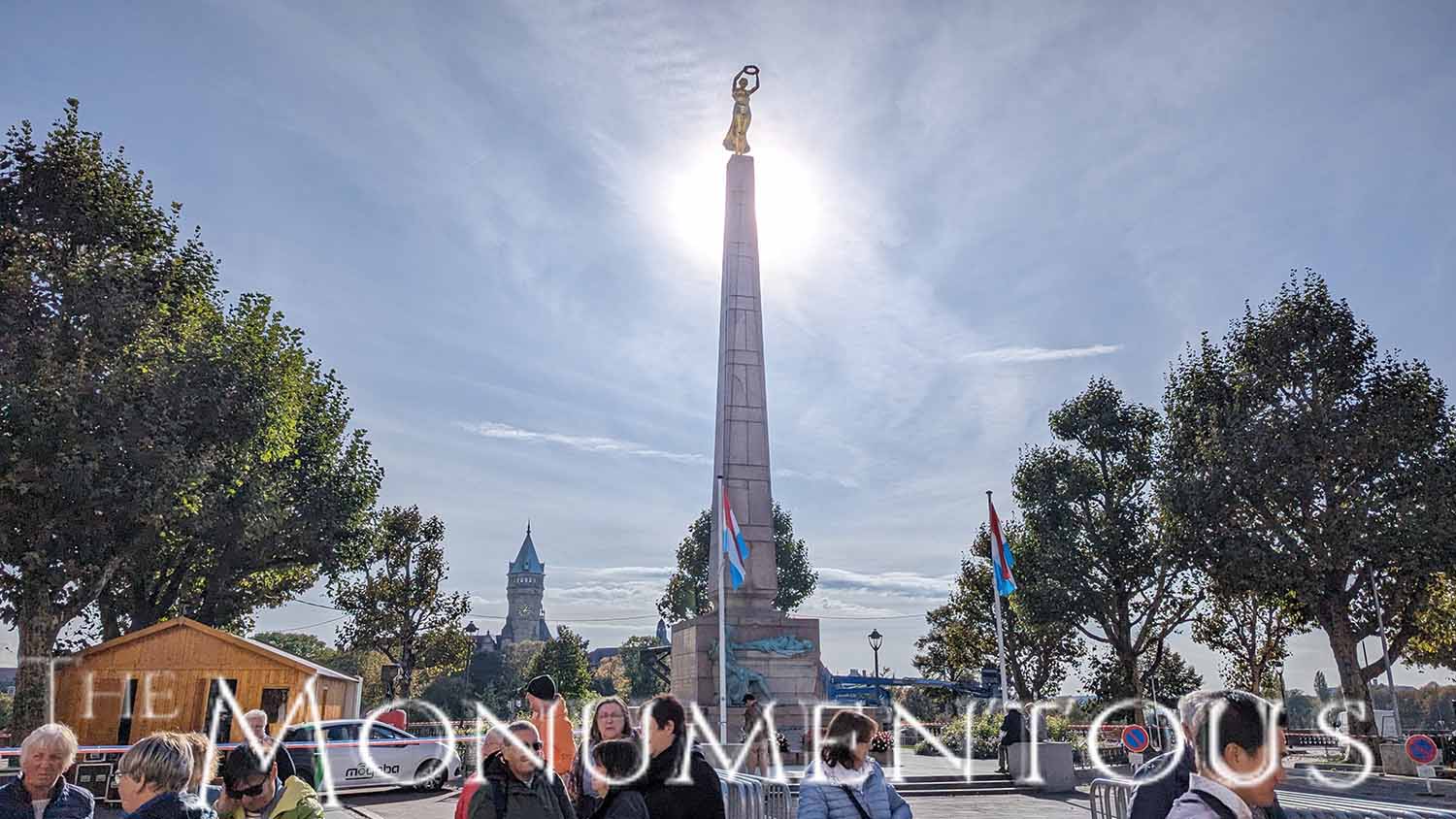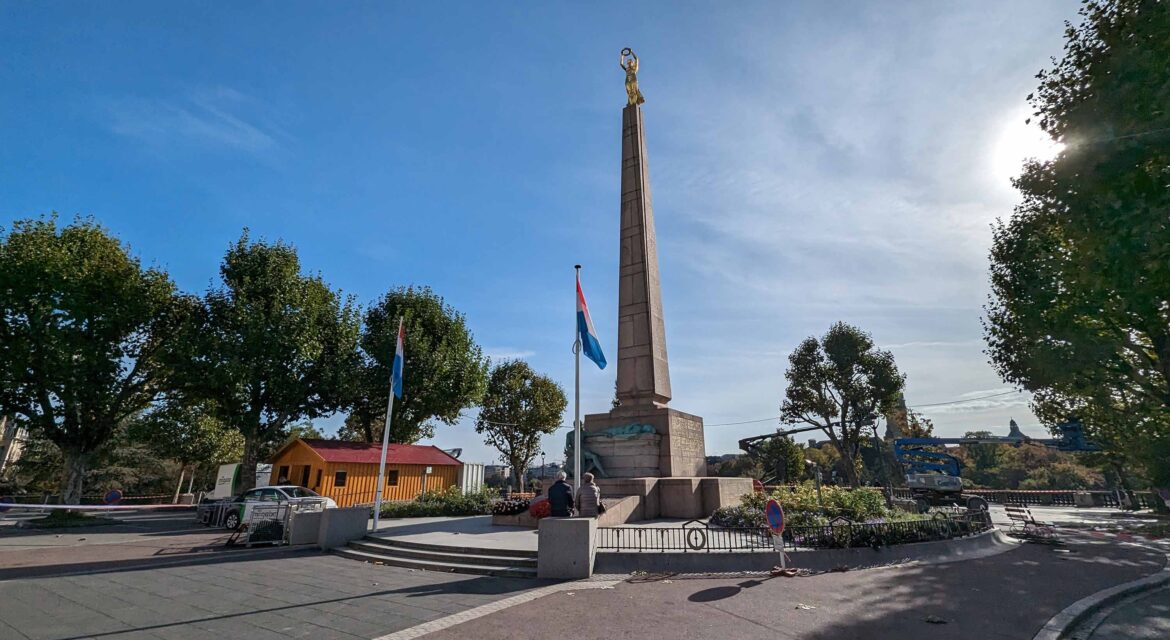 The Monument of Remembrance has become a symbol of Luxembourg City that is recognized across the entire country of Luxembourg thanks to the Gëlle Fra (Luxembourgish for ‘Golden Lady’) sculpture that tops the piece. What had been created as a memorial has instead become an icon in a way that has come to drive revenue and compel connection across the city and country.
The Monument of Remembrance has become a symbol of Luxembourg City that is recognized across the entire country of Luxembourg thanks to the Gëlle Fra (Luxembourgish for ‘Golden Lady’) sculpture that tops the piece. What had been created as a memorial has instead become an icon in a way that has come to drive revenue and compel connection across the city and country.

Honoring Sacrifices in World War I and II
 When German troops invaded Luxembourg in 1914, approximately 3,000 ctizines voluntarily signed up to join the Allied efforts. The majority of them lost their lives or were wounded over the course of what would become Luxembourg’s involvement in World War I. After it was over in 1918, a committee was founded with the aim of erecting a national monument to remember all of the war heroes who fought and died in battle. The piece was finalized in 1923 when a gilded bronze statue was placed on top of the obelisk along with two bronze soldiers at the base of the monument.
When German troops invaded Luxembourg in 1914, approximately 3,000 ctizines voluntarily signed up to join the Allied efforts. The majority of them lost their lives or were wounded over the course of what would become Luxembourg’s involvement in World War I. After it was over in 1918, a committee was founded with the aim of erecting a national monument to remember all of the war heroes who fought and died in battle. The piece was finalized in 1923 when a gilded bronze statue was placed on top of the obelisk along with two bronze soldiers at the base of the monument.
The statue representing Nike, the goddess of victory, quickly became an icon for the community and received the nickname “Gëlle Fra,” which is Luxembourgish for “Golden Lady.” She holds out a laurel wreath as if placing it upon the head of the nation. The bronze statues at the base represent a dead soldier and a comrade. Markings and engravings appear on each side of the piece, highlighting the history and sacrifices made by Luxembourg soldiers.
In 1940, as part of the annexation of Luxembourg into the Germanic Reich that was part of World War II, orders were given to take down the monument and Gëlle Fra was toppled. After Luxembourg had been freed by the Allies, the base of the Monument of Remembrance was reassembled. The top remained empty until Gëlle Fra was rediscovered in 1980 beneath the stands of the stadium. It was restored to the apex of the piece in 1985 while also being rededicated to honor soldiers from both World Wars. A few years later, a plaque was added to commemorate the Luxembourgers who died in the Korean War.
During the war and after, Gëlle Fra became a symbol of the resistance of the Luxembourg people but has become a powerful icon that resonates in distinct but equally powerful ways with residents and visitors.

Impacting the Community and Enabling Engagement
 During the 2010 World Expo, Gëlle Fra was removed from the monument and transported to Shanghai to serve as a welcoming feature of the Luxembourg Pavilion. Residing there for six months, the piece allowed audiences to engage with a history and legacy that is specific to the country.
During the 2010 World Expo, Gëlle Fra was removed from the monument and transported to Shanghai to serve as a welcoming feature of the Luxembourg Pavilion. Residing there for six months, the piece allowed audiences to engage with a history and legacy that is specific to the country.
As a further impact the piece has had on the culture of the city and country, a controversial version of the monument was shown in a nearby location that depicted the statue as visibly pregnant and with a different inscription. Created by Sanja Iveković in 2001, the reinterpretation of the piece underscores what an essential element of the city it has become.
That impact can be further seen all across Luxembourg with products, stores and maps featuring Gëlle Fra in such a prominent manner. By featuring what has become such a recognizable and popular icon, the Monument of Remembrance showcases what it can mean for a landmark to enable engagement that resonates in the hearts and minds of audiences across the eras.

Representing a Legacy of Culture and Connection
 Located in the prominent Constitution Square and viewable from various locations in Luxembourg City, the Monument of Remembrance is recognized as a symbol of freedom and independence while Gëlle Fra has become an icon that is synonymous with Luxembourg itself. This connection to the people, history and culture of the city and region has created opportunities that are set to further evolve in ways that will benefit the entire community.
Located in the prominent Constitution Square and viewable from various locations in Luxembourg City, the Monument of Remembrance is recognized as a symbol of freedom and independence while Gëlle Fra has become an icon that is synonymous with Luxembourg itself. This connection to the people, history and culture of the city and region has created opportunities that are set to further evolve in ways that will benefit the entire community.

